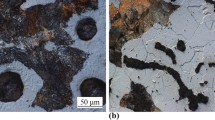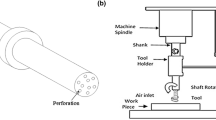Abstract
In this study, an adaptive neuro fuzzy interface system (ANFIS) based predictor was designed to predict the physical properties of four almond types. Measurements of the dimensions, length, width and thickness were carried out for one hundred randomly selected samples of each type. With using these three major perpendicular dimensions, some physical parameters such as projected area, arithmetic mean diameter, geometric mean diameter, sphericity, surface area, volume, shape index and aspect ratio were estimated. In in a various Artificial Neural Network (ANN) structures, ANFIS structure which has given the best results was selected. The parameters analytically estimated and those predicted were given in the form of figures. The root mean-squared error (RMSE) was found to be 0.0001 which is quite low. ANFIS approach has given a superior outcome in the prediction of the Physical Properties of Almond Nuts.










Similar content being viewed by others
References
Afonso Junior PC, Correa PC, Pinto FAC, Queiroz DM (2007) Aerodynamic properties of coffee cherries and beans. Biosyst Eng 98:39–46
Aktas T, Polat R, Atay U (2007) Comparison of mechanical properties of some selected almond cultivars with hard and soft shell under compression loading. J Food Process Eng 30:773–789
Arslan S, Vursavus KK (2008) Physico-mechanical properties of almond nut and its kernel as a function of variety and moisture content. Philipp Agric Sci 91:171–179
Ayoubi S, Shahri AP, Karchegani PM, Sahrawat KL (2011) Application of Artificial Neural Network (ANN) to predict soil organic matter using remote sensing data in two ecosystems. In: Atazadeh I (ed) Biomass and remote sensing of biomass, pp 181–196
Bachir O, Zoubir AF (2012) Adaptive Neuro-fuzzy inference system based control of Puma 600 robot manipulator. Int J Electr Comput Eng 2:90–97
Bala BK, Ashraf MA, Uddin MA, Janjai S (2005) Experimental and neural network prediction of the performance of a solar tunnel drier for drying jackfruit bulbs and leather. J Food Process Eng 28:552–566
Diamantopoulou MJ (2005) Artificial neural networks as an alternative tool in pine bark volume estimation. Comput Electron Agric 48:235–244
Dousti A, Ghazavi MA, Maleki A (2013) Grading of empty walnut using signal processing and artificial neural network techniques. Int J Agric Crop Sci 6:1072
FAO (2012) FAO web page. www.fao.org. Accessed 10.11.2016
Goyal S (2013) Artificial neural networks in vegetables: a comprehensive review. Sci J Crop Sci 2:75–94
Karimi H, Navid H, Mahmoudi A (2012) Detection of damaged seeds in laboratory evaluation of precision planter using impact acoustics and artificial neural networks. J Artif Intell Res 1:67
Kester DE, Gradziel TM (1996) Almonds. Fruit breeding. In: Janick J, Moore JN (eds) vol III. Wiley & Sons, Hoboken, pp 1–240. ISBN 978-0471126690
Khalesi S, Mahmoudi A, Hosainpour A, Alipour A (2012) Detection of walnut varieties using impact acoustics and artificial neural networks (ANNs). Mod Appl Sci 6:43
Khalifa S, Komarizadeh MH, Tousi B, Nikbakht AM (2011) An intelligent system for grading walnuts based on acoustic emission and neural networks. J Food Agric Environ 9:109–112
Konečný V, Trenz O, Svobodová E (2010) Classification of companies with the assistance of self-learning neural networks. Agric Econ 56:51–58
Mahmood M, Mojtaba T, Javad K, Narjes M (2008) Modeling some mechanical properties distributions of almond using weibull function. 18th National Congress on Food Technology, Iran, pp 1–6
Mahmoodi-Eshkaftaki M, Ebrahimi R, Torki-Harchegani M (2013) Determination of critical conditions for puncturing almonds using coupled response surface methodology and genetic algorithm. Food Technol Biotechnol 51:500–508
Mancuso S, Ferrini F, Nicese FP (1999) Chestnut (Castanea sativa mill.) genotype identification: an artificial neural network approach. J Hortic Sci Biotechnol 74:777–784
McCabe WL, Smith JC, Harriot P (1986) Unit operations of chemical engineering. McGraw-Hill, New York
Mirzabe AH, Khazaei J, Chegini GR, Gholami O (2013) Some physical properties of almond nut and kernel and modeling dimensional properties. Agric Eng Int 15:256–265
Mohsenin NN (1986) Physical properties of plant and animal materials. Gordon & Breach Science, New York
Movagharnejad K, Nikzad M (2007) Modeling of tomato drying using artificial neural network. Comput Electron Agric 59:78–85
Mpotokwane SM, Gaditlhatlhelwe E, Sebaka A, Jideani VA (2008) Physical properties of bambara groundnuts from Botswana. J Food Eng 89:93–98
Reshadsedghi A, Mahmoudi A (2013) Detection of almond varieties using impact acoustics and artificial neural networks. Int J Agric Crop Sci 6:1008
Reshadsedghi A, Mahmoudi A, Azimirad V, Hajilou J, Ghaffari H (2014) Non-destructive detection of unshelled almonds quality based on their kernel percentage using impact-acoustics and ANN’s techniques. Agric Sci Dev 3:360–365
Rugini E, Monastra F (2003) Temperate fruits. In: Mitra SK, Rathora DS, Bose TK (eds) vol II. Display Printers, India, pp 344–414. ISBN 978-8190017114
Sayinci B, Ercişli S, Akbulut M, Şavşatli Y, Baykal H (2015) Determination of shape in fruits of cherry laurel (Prunus laurocerasus) accessions by usıng elliptic fourier analysis. Acta Sci Pol Hortorum Cultus 14:63–82
Soylu A (2003) Ilıman iklim Meyveleri II. Ders Notları No: 72. Uludağ Üniversitesi Zir. Fak., Bursa, pp 204–220
Svoboda E (2007) Knowledge-management in managerial work of business management. Agric Econ 53:298–303
Šťastný J, Konečný V, Trenz O (2011) Agricultural data prediction by means of neural network. Agric Econ 57:356–361
Author information
Authors and Affiliations
Corresponding author
Ethics declarations
Conflict of interest
B. Demir, İ. Eski, F. Gürbüz, Z. Abidin Kuş, K. Uğurtan Yilmaz, M. Uzun and S. Ercişli declare that they have no competing interests.
Rights and permissions
About this article
Cite this article
Eski, İ., Demir, B., Gürbüz, F. et al. Design of Neural Network Predictor for the Physical Properties of Almond Nuts. Erwerbs-Obstbau 60, 153–160 (2018). https://doi.org/10.1007/s10341-017-0349-3
Received:
Accepted:
Published:
Issue Date:
DOI: https://doi.org/10.1007/s10341-017-0349-3




